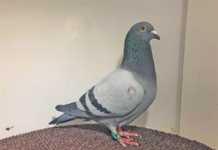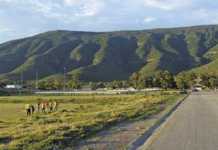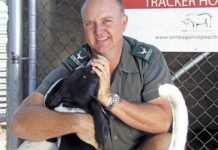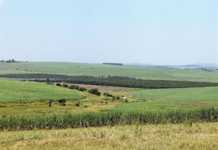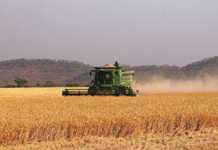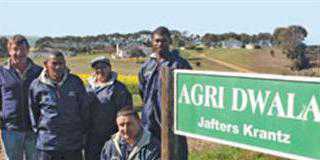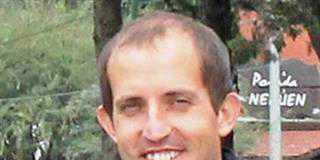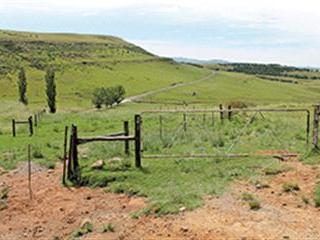
To an outsider, the beautiful St Bernard’s Peak area in western KwaZulu-Natal is a place that seems to hold all the promise of living the dream. On one side, the Drakensberg’s spectacular slopes and peaks rise up, and on the other, green hills and clear rushing rivers mark the rolling landscape. It could be straight off a brochure for a rural retirement idyll eagerly sought after by city slickers. Even the silence, broken only by the sound of cattle and the wind in the grass, seems made to order.
Hard times
For a farmer with a small milking herd trying to break into commercial dairying, this stunning locale comes with a number of difficulties that could break the spirit of all but the most resolute. Cyril Mhlatshana could be considered the current archetype of unflinching tenacity, refusing to be beaten by the obstacles in his path as he struggles to move from small-scale to commercial farming.
Although Cyril is the beneficiary of various government programmes, there is no guarantee of a smooth or rapid transition.
It has been a little more than six years since he moved onto the 592ha Nofisa farm, and there are more to go before he fulfils his farm business plan.
.gif)
Cyril Mhlatshana
As a young boy, growing up on communal land at Colana in the Eastern Cape, Cyril helped with his family’s small-scale farming enterprise of cattle, sheep, goats and yellow maize and learned to drive a tractor and tractor-drawn implements. While not formal agricultural training, these experiences formed a foundation for him to build on when he started farming.
“After I left school, I worked in the Durban area,” says Cyril. “In late 2006, while working as a pest control technician, I applied for, and was granted, a department of land reform loan which helped me buy Nofisa from a white farmer. My arrangement with land reform is that I pay the department back as my profitability allows.”
Marketing
When he purchased Nofisa, Cyril bought not only the hilly veld grazing and the arable lands but also three well-used tractors, a number of implements, various farmer and staff quarters, a shed, a milking parlour and, perhaps most importantly, a dairy cattle herd of about 60 Holstein x Jersey animals of mixed age and gender. The previous owner sold fresh milk to local rural communities, and when he moved there in 2007 Cyril thought he’d do the same.
“But then I realised that the business would probably run at a loss if I sold milk to the local communities. Marketing milk in the
rain, heat and snow of this hilly area would take too much time and could lead to milk going to waste. “Many of the people in these communities are unemployed and get a small amount of money once a month through government pension and welfare schemes. I may have been able to sell milk around pay day but what about the rest of the month?”
.gif)
The KZN DAEA paid for Agri Design & Civils to construct a new dairy parlour for Cyril after his old one collapsed during the heavy snow of 2012.
Wanting a stable market, Cyril signed an off-take agreement with milk processing company, Nestlé. He chose Nestlé because he had been told it was supportive of developing dairy farmers. From 2007 to 2011, Cyril took the milk from his 26-cow milking herd to a neighbour’s farm for collection. The Nestlé milk tanker could not reach Cyril’s dairy.
The milking parlour Cyril inherited was in an old stone building and used an outdated, labour-intensive bucket system capable of milking four cows at a time. Herd genetics and fodder supply were poor and average milk production was 10l/cow/day.
“I want to have 100 cows in milk sometime in 2014 because anything smaller than this is not financially viable,” says Cyril.
“But I can only grow my herd as fast as my bank balance allows.” Apart from milk sales, Cyril earns some cash from the sale of cull cows, bull calves and slaughter sheep from his Dohne Merino flock.
“My dairy business has not grown as I hoped it would,” he says. In 2011 he decided his volumes were too small to supply Nestlé and he started supplying a government school milk scheme in the St Bernard’s Peak area.Refusing to accept defeat, Cyril says, “I plan to resupply Nestlé when I have reached 50 to 60 cows in milk.
Growing the business
“I took a big knock in July last year when heavy snow caused the old dairy parlour to collapse, killing six dairy cows I had sheltered in there. Eight pregnant heifers and four calves that were outside died of the cold.” After hearing of this tragedy, the KZN Department of Agriculture and Environmental Affairs (KZN DAEA) paid for Howick-based company, Agri Design & Civils, to design and construct a new parlour for Cyril. The six-point swing-over system can be extended to a 12-point system as the herd grows.
.gif)
Workers, Myegeni (left) and Siyabonga Mhlatshana, treat dairy calves for ticks in a small crush custom-built for the purpose. Cyril is trying to grow his dairy herd.
The DAEA also paid for a significant length of fencing to be put up. “To save on costs and build up my finances, I am currently milking 22 cows once a day. I find that milk yield, ranging from 3l to 7l/cow/ day, is best in the morning and drops if they’re milked twice a day. Dairy cattle need a concentrate feed ration at each milking and I have calculated that I lose money if I get low evening volumes but still have to feed the ration. When the milk increases I will start milking twice a day again,” says Cyril.
He uses veld as grazing for the cows although he understands that veld grass does not encourage good milk yields and is developing higher nutrition dairy fodder for improved milk production. Over the years, Cyril has gradually increased the area under dryland maize grown for silage to 65ha, planting Pioneer’s Phb 3443 cultivar. He plans to plant a field of Japanese radish for grazing and harvesting as feed, 3ha of kikuyu (Pennisetum clandestinum) for spring and summer grazing and 10ha of annual ryegrass.
With little formal dairy farming knowledge, Cyril attended as many dairy training and livestock disease courses as he could. Some were sponsored by the KZN DAEA, the Milk Producers’ Organisation and the Agricultural Research Council’s Milk Recording programme, others he paid to attend. “I employ four people; two are family members, and two are locals,” explains Cyril. “My wife, Lungiswa Gaba, and I have two sons, Mzamo who is studying Animal Husbandry at Owen Sithole College of Agriculture, and Menzi who is in Grade 11. The boys help on the farm when they can.”
Cyril is grateful for the government assistance he has received, although it hasn’t always panned out as intended. For example, in 2009 the KZN DAEA planted about 80ha of yellow maize as grain to use as an income source for capital developments on Nofisa Farm. Unfortunately the maize was planted too late, in early December, and the consequent harvest was poor. On the plus side, the KZN DAEA has paid for some fencing, the new dairy parlour and a good gravel road with a cement causeway.
.gif)
A number of usable implements came with the farm. Cyril hopes government will help him source other much needed implements.
Positive developments can be somewhat clouded by stock theft and runaway fires, the bane of many farmers’ lives. Close to the Lesotho border, Nofisa Farm and its livestock are a lure to Basotho stock thieves. Cyril was luckily able to track and recover 16 head of cattle that had been stolen from him, but, judging by trends in his area, he’s bound to experience future theft.
“Fires can be a problem, and even though I burn breaks every year I have had runaway fires crossing my land. One fire killed some of my animals and burned down staff housing. Local commercial farmers have a good network to help each other fight runaway fires,” says Cyril. Looking back, he says that making progress has been “beyond difficult”. However, he remains optimistic about his future as a farmer and the future of his business.
“I am keeping my eyes on the light on the horizon,” he says.
What Cyril has learnt from his farming experience
“I’ve learnt that passion and the drive to succeed are very important in farming. Don’t expect money when you start farming; you are more likely to get stress. A proper plan and capital are vital towards becoming a successful farmer one day. Capital without a plan, or a plan without capital, will not work. When you are farming, the weather can be your best friend or your worst enemy. Be wary of the two-legged animal that is responsible for stock theft and runaway fires. I am grateful that when I need any sort of help I can call on my neighbours who are experienced farmers.”
Consultant Allan Penderis of Tammac Consultants advice 12 general rules are of value to all dairy farmers.
Contact Cyril Mhlatshana on 083 952 5251.

